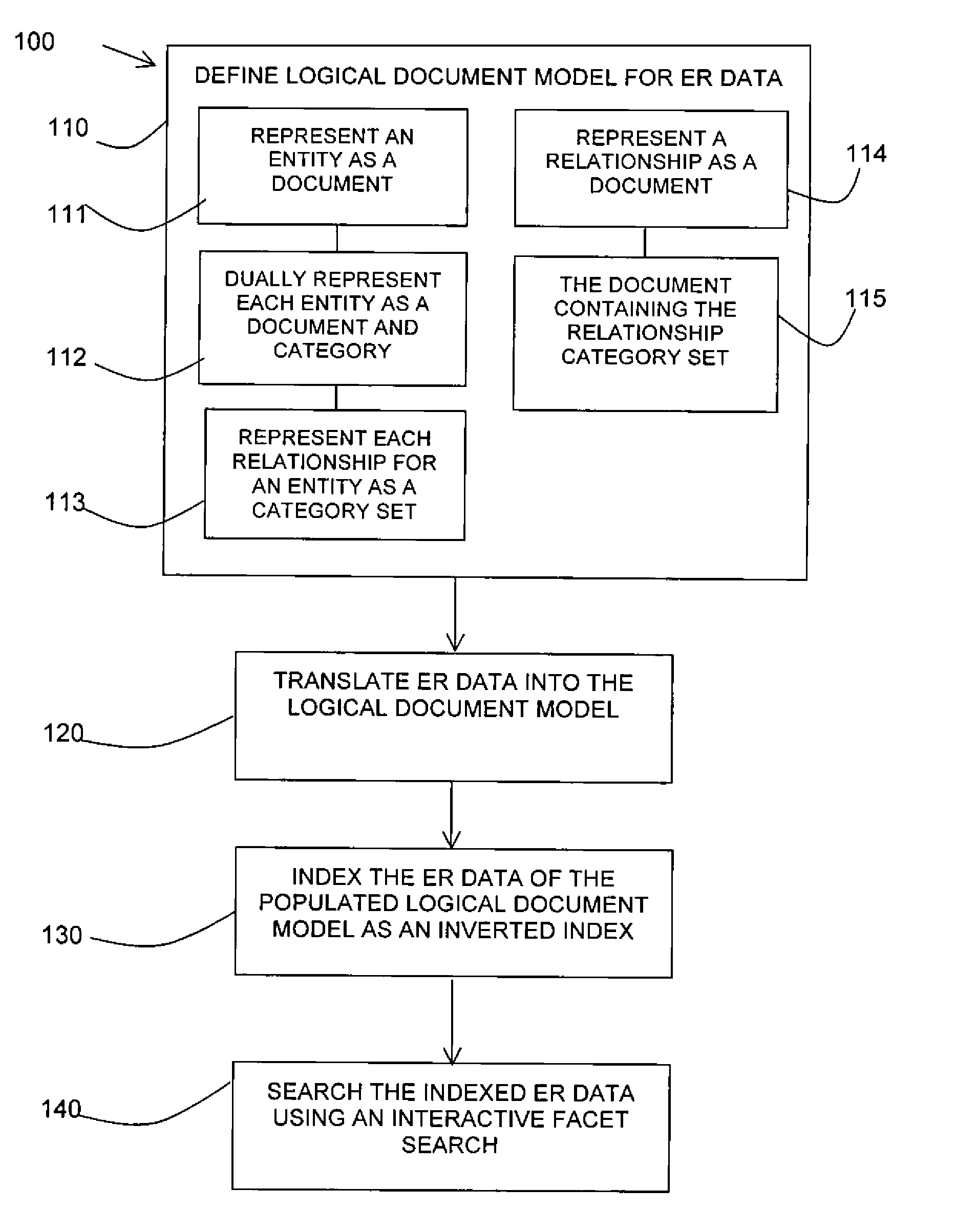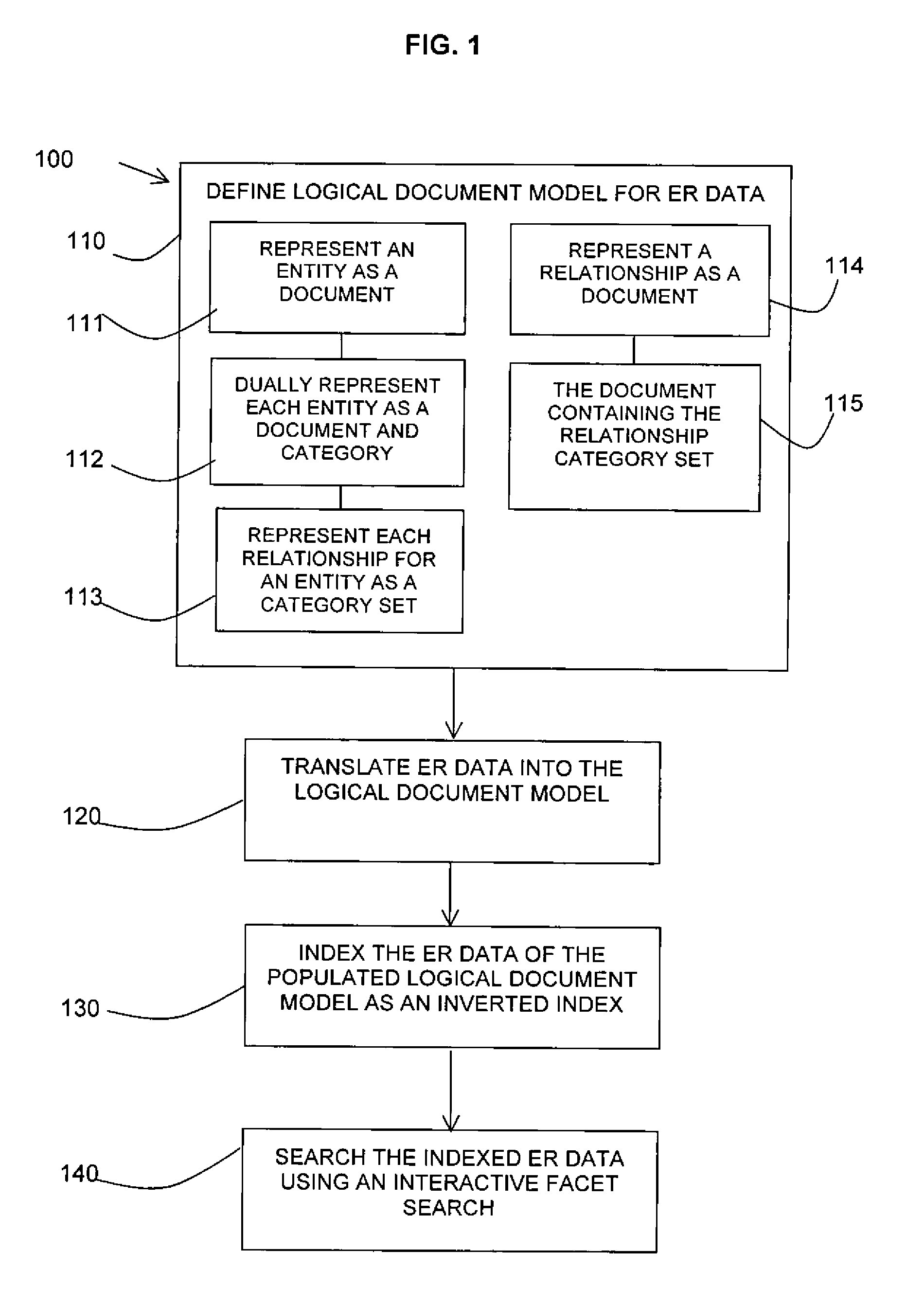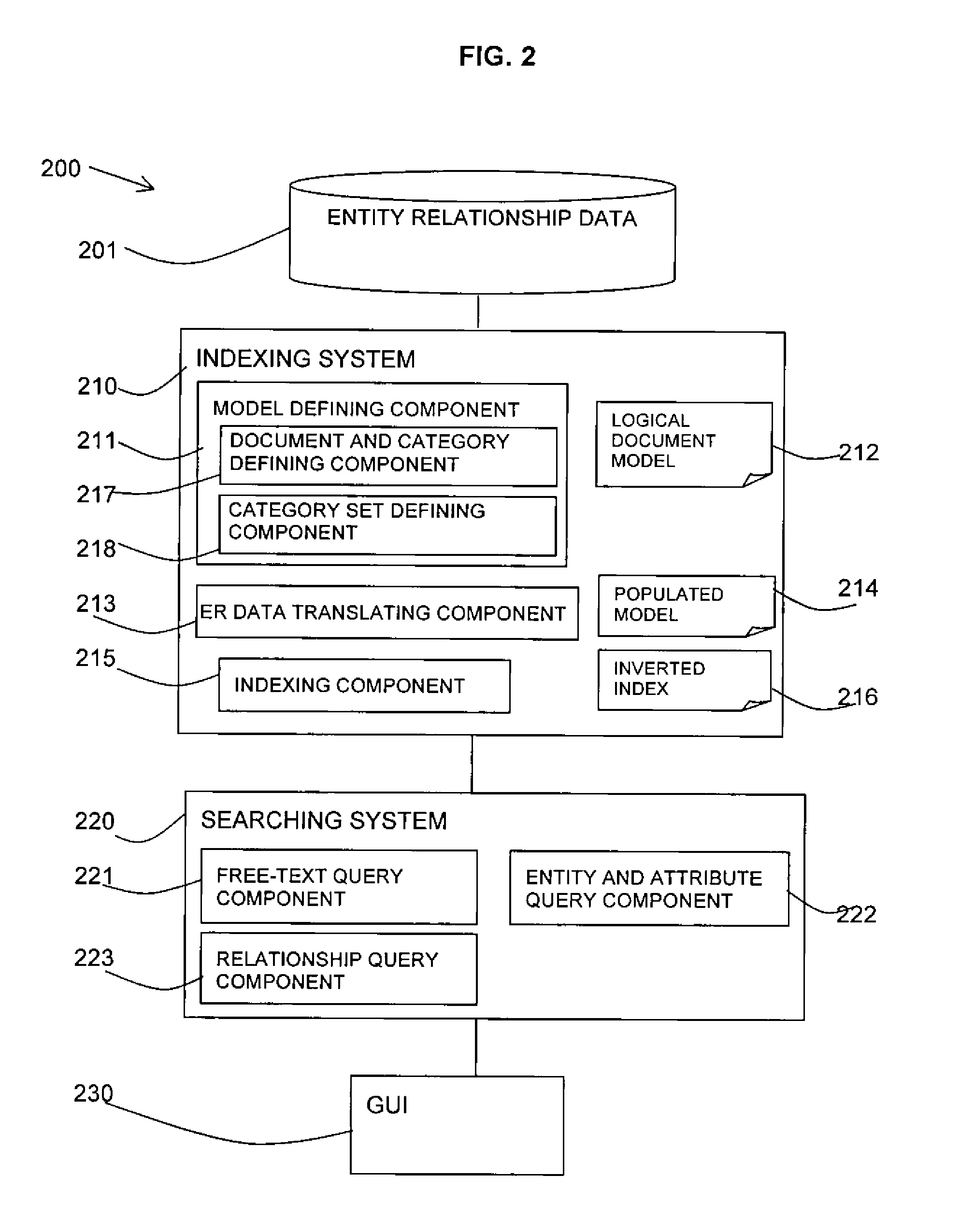Indexing and searching entity-relationship data
a technology of entity relationship and data, applied in relational databases, database models, instruments, etc., can solve the problems of lack of proper query interfaces, rapid expansion of data complexity and diversity,
- Summary
- Abstract
- Description
- Claims
- Application Information
AI Technical Summary
Benefits of technology
Problems solved by technology
Method used
Image
Examples
example
Social-Search ER Model
[0052]FIG. 4A illustrates an example entity-relationship model 400 related to the domain of social-search that is used to illustrate the main described concepts. In this model 400, there are three main entity types (shown as rectangles in FIG. 4A), person 401, document 402, and tag 403. Each entity has attributes (shown as ovals in FIG. 4A) that describe it and a key (underlined in the oval). For example, a person 401 may have an id 411 (String) that further serves as its key, a name 412 (String), and an age 413 (Integer) attributes. A tag 403 may have a label 414 (String) that serves as its key, and a taxonomy 415 (String) attributes. A document 402 may have a URL 416 (String) which serves as a key, a title 417 (String), and a content 418 (String).
[0053]Relationships (shown as diamonds in FIG. 4A) may link entities. For example, persons 401 can own 421 documents 402 while their authorship role 431 is further kept. Persons 401 may bookmark 422 documents 402 wit...
example query 1
[0059]The query predicate Person.*:* (alternatively Person.* or Person.) can be used to return all person entities. A specific person entity may be further returned by using that entity's key; e.g., the query Person.key:12345 will return a single person entity identified by the specified person key.
example query 2
[0060]Return all person entities whose name is “John” and age is between 20 to 40:[0061]a. Person.name:“John” AND Person.age:[20 TO 40]
Free-Text Predicates
[0062]As already mentioned, issuing structured queries such as the aforementioned entity attribute queries requires some level of knowledge regarding structure. However, such knowledge is usually attained only by system experts, while the majority of users cannot translate the information need into structured queries. Free-text query predicates treat entities as text documents and therefore query the entities' content regardless of their structure. A free-text query predicate may include keywords, phrases, prefixes (e.g., ne*), etc. As an example, the query predicate “CNN News” (or *.*:“CNN News”) can be used to return entities that contain this phrase in at least one of their attribute values. (CNN is a trade mark of Cable News Network.) The following example demonstrates how results can be restricted to a specific entity type.
PUM
 Login to View More
Login to View More Abstract
Description
Claims
Application Information
 Login to View More
Login to View More - R&D
- Intellectual Property
- Life Sciences
- Materials
- Tech Scout
- Unparalleled Data Quality
- Higher Quality Content
- 60% Fewer Hallucinations
Browse by: Latest US Patents, China's latest patents, Technical Efficacy Thesaurus, Application Domain, Technology Topic, Popular Technical Reports.
© 2025 PatSnap. All rights reserved.Legal|Privacy policy|Modern Slavery Act Transparency Statement|Sitemap|About US| Contact US: help@patsnap.com



